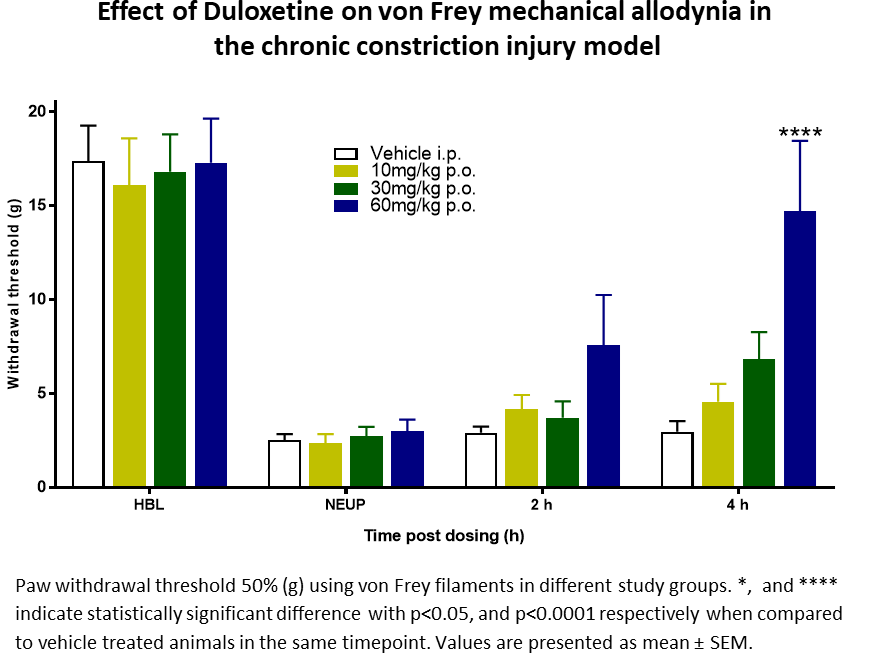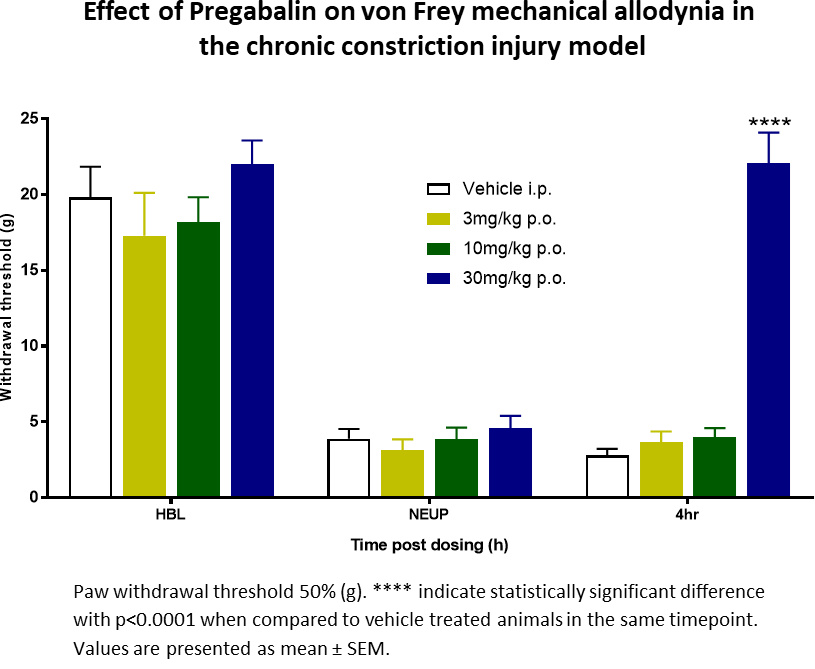Models & Assays
Nerve Ligation Models
Neuropathic pain arising from direct nerve lesion can be studied using one of our ligation models, which result in a mixture of injured and intact axons within the sciatic nerve which innervates the paw. Pain responses on the injured (ipsilateral) side can be compared to either baseline or uninjured (contralateral) side responses.
Chronic Constriction Injury (CCI)
Ligation of the sciatic nerve with a chromic gut produces local inflammation which leads to robust mechanical and cold allodynia, as well as thermal hyperalgesia. This pain phenotype persists for at least 28 days and can be alleviated with pregabalin, duloxetine, naproxen or morphine.


Partial Sciatic Nerve Ligation (PSNL)
In the PSNL (also known as Seltzer) model, a third of the sciatic nerve is tightly ligated just proximal to the trifurcation of the tibial nerve. Animals develop a robust and long-lasting mechanical and thermal hypersensitivity which can be monitored by von Frey, Hargreaves and cold plate testing and responds to analgesics such as pregabalin.
Spinal Nerve Ligation (SNL)
In the SNL (also known as Chung) model the L5 spinal nerve is tightly ligated with a silk suture, while the L4 spinal nerve remains intact. This leads to a robust and persistent mechanical and thermal hypersensitivity which responds to pregabalin. One advantage of the SNL model is it allows comparison of transcriptional/protein changes in injured (L5) vs uninjured (L4) DRG neurons.